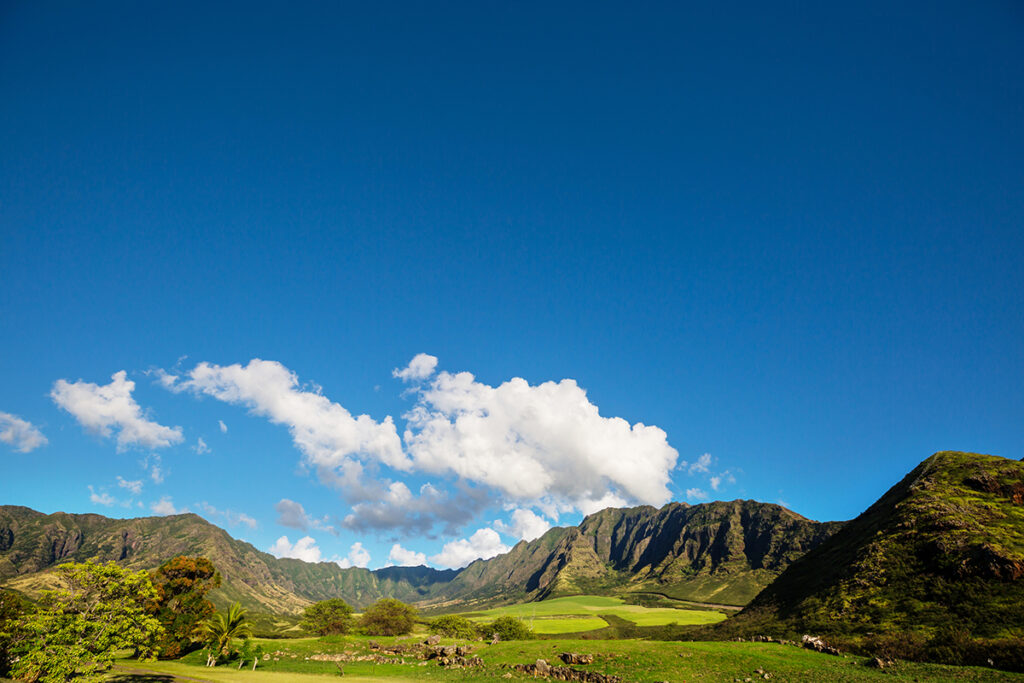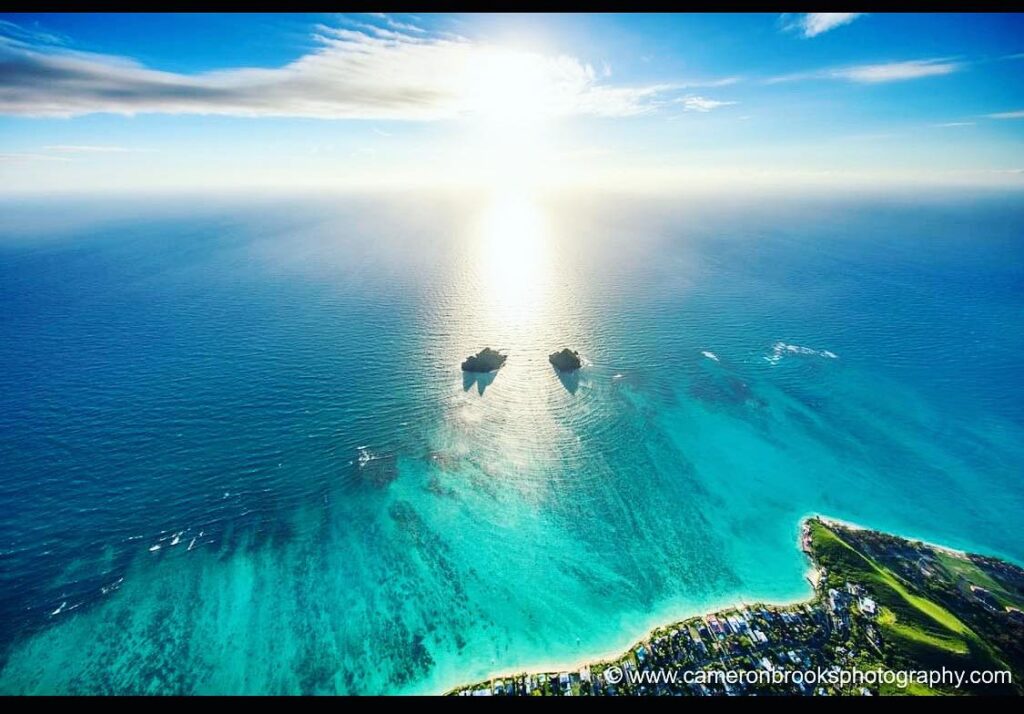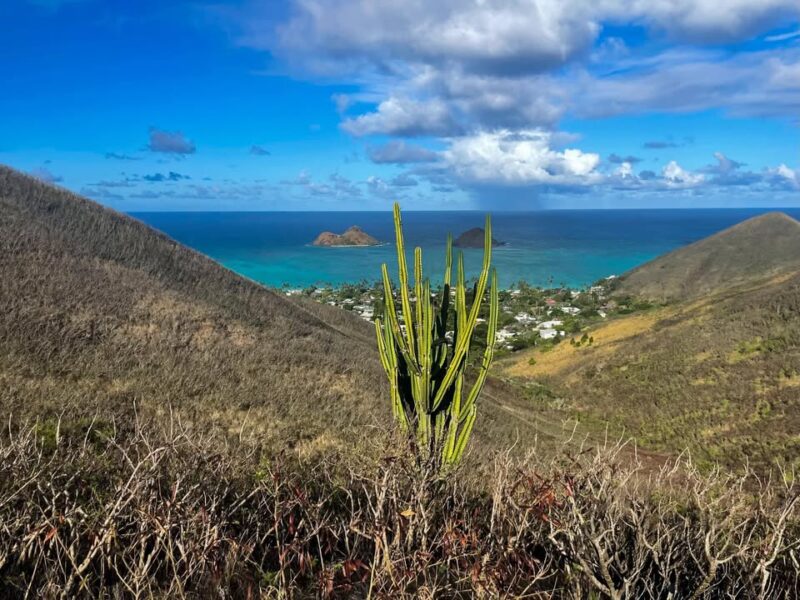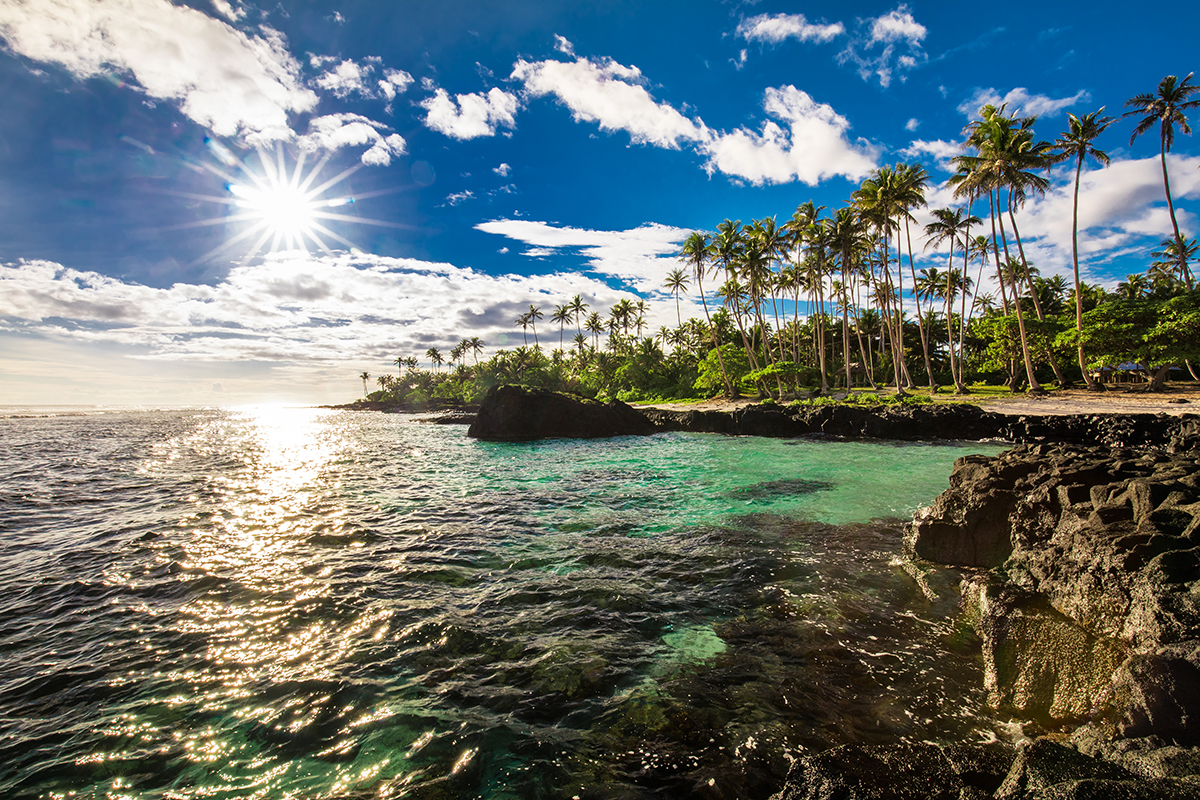Typically there is a light rain over the West Maui Mountains in Lahaina. Picture the ultimate weather mostly sunny, not too hot. Gentle breezes blowing. Never too cold. Cool nights. Some rain, but not usually too much.
Hawaii’s weather is world-renowned for its tropical beauty, mild temperatures, and diverse microclimates. The islands offer a range of conditions, from sunny beaches to misty mountains, making it a year-round destination for travelers. Whether you are hiking on the Big Island, surfing on Oahu, or relaxing in Maui, understanding Hawaii’s weather patterns will help you plan better.
Welcome to Hawaii!
The funny thing is that on the islands the forecast for each part of an island is often quite different. Surf, sun, rain, wind – are all variable and change constantly.
Many locals say if you do not like the weather, wait five minutes it will change. That’s about right. It changes very fast.
Once I went up in a little Cessna plane with my roommate in the Air Force. He had just received his private pilot license. I paid the $50 for gas and we hit the skies in a little propeller engine plane from Dillingham Airfield on the north side of Oahu.
We had been up in the air for about twenty minutes when massive storm clouds started rolling in. We wanted to land but the air traffic controllers said to land in Honolulu where it was still sunny. We flew down there to find it rained out. They redirected us to the north again. We landed in a horrible rainstorm with forty mile-per-hour wind gusts and absolutely zero visibility.
I learned then, and never forgot, Hawaii weather changes in the blink of an eye.
On the big island of Hawaii you can ski at the top of Mauna Kea’s peak. A helicopter will need to drop you off but it’s possible. You can get a deep tan reclining on a towel on the beach that same day when you’re finished. Mauna Kea is a dormant volcano with such a high summit that it gets snow. Maui too has a very high dormant volcano, Haleakala Volcano which goes over 10,000 feet and gets quite cold, with snow at times too but it quickly melts.

A beautiful view of farmland on Oahu, showcasing the island’s rich agricultural landscape and fertile fields.
How Much Sun Does Hawaii Get?
Here’s a breakdown of the average number of days with sunshine per year in the main cities on each of the four major islands:
~ Hilo, Big Island: 168
~ Honolulu, Oahu: 271
~ Kahului, Maui: 276
~ Lihue, Kauai: 240
Source National Climatic Data Center.
Year Round Heat
It’s warm all year. Some would call Hawaii “hot”. I never would, having lived in Miami, Tampa, and Thailand for a combined total of fifteen years. Those places are hot. Hawaii is the perfect weather for me, but you may find it hot all the time. I know people that sweat continually in Hawaii. They’re not doing anything physically, but they just sweat constantly. If you’re one of those people, Hawaii may not be the right place for you to live. If you think you can get used to it, make the effort, I’m sure you can, many people do.
No Seasons?
I like to say there are no real weather seasons in Hawaii. Only warm, balmy weather and that’s about it. Sure, once per year you might get to breath fog on a cold December or January day, but it doesn’t happen often. Not even every year.
There are technically two seasons in Hawaii. Kau wela the summer, goes from May to October. This is a warm, fairly dry time, but there are still many occasional rain showers coming through. Ho’oilo the winter is from November to April and is characterized by slightly cooler temperatures and more rain.
Perfect Weather?
Hawaii gets many sunny days each year. The weather in Hawaii is typically about 80 degrees and with a slight breeze called “trade winds” that blow from the northeast to the southwest. In fact, local Hawaiians often tell directions in relation to which side of the island gets the most wind. The northeast side of Oahu is also known as the “windward” side. The opposite is the leeward side.
Hawaii’s Blazing Sun
Hawaii is close to the equator so the sun is stronger here.
You’ll feel the sun’s intensity is different from when you lived in the mainland USA, even if you lived as far south as Miami, Florida. I sure did. The sun is more like a radiation heater than just a source of convection. It feels as though you’re being cooked from the inside. Sunburns can be especially nasty, I remember peeling thick layers of skin off my forehead and upper back when I got burned badly a few times. It only takes a few times to learn!
On clear sky days, the sun can be especially intense, so it is recommended you use hats and sunscreen to avoid negative effects. If you accidentally end up with sunburn, the local aloe plant cut open and applied directly is a soothing remedy.
Air Humidity
Though not usually stifling, the air humidity in Hawaii can be something to get used to if you do not have wet air in your current home. You’ll notice it as you exit your air-conditioned plane if it’s especially hot and humid that day. You may even pass-out. Seriously, I know someone that did!
For most of us though, it isn’t that bad, and you’ll get used to it. The heat and humidity of Hawaii is tempered by the near constant trade winds that blow most months of the year. Trade winds are stronger during the summer and weaker through winter months.
Along with trade winds are the Kona winds, which come from the southeast. These occur during the winter months and bring rain with them.

Image Copyright (C) 2023 Cameron Brooks Photography. All rights reserved. Used with permission.
Average Relative Humidity Range in Percent (Annual):
~ Honolulu, Oahu: 58 – 70
~ Kahului, Maui: 60 – 72
~ Lihue, Maui: 70 – 74
~ Hilo, Hawaii: 71 – 76
Source National Climatic Data Center.
Frequent Rain
It rains often on all the islands. Not all at the same time over all islands, but at different times in different areas.
On average each year, the islands of Hawaii get seventy inches of rain. That’s almost eight trillion gallons of rainwater falling each year. Seems like a lot, right? It doesn’t seem like it, most of the rain falls in certain areas of the islands. It isn’t like you wake up to rain everyday!
The wettest island is Kauai and this island also has the distinction of having the wettest spot on the entire planet. An average of 486 inches of rain falls there each year. Do you know how much SNOW that would be if it fell instead? Me neither, but it’s a lot of rain regardless. More than an inch of rain per day. That’s a lot!
Hilo on the Big Island Hawaii gets 130 to 200 inches of rain per year and is the wettest city in the United States.
There are some very dry spots in Hawaii too. Some places get less than six inches of rain per year!
There is a lovely type of rain the Hawaiians call “Kilihune” it’s the soft misty rain that falls and cools you off on a hot day.
So, no matter which Hawaiian Island you choose to be living on it rains often but usually in short bursts. Some find that annoying. If you ride a motorcycle or bicycle a lot, you should be prepared for heavy showers occasionally. It happens, that’s Hawaii.
Rain is at its worst during the winter. Rain virtually stops in June and July but there is sometimes the occasional shower anyway.
Hawaii is incredibly lush. There is a reason for that; it is raining every day somewhere on the islands. That’s a given. Even though the sun is shining very brightly and the rest of the sky is blue there might be a rain cloud up over the mountains, dumping large amounts of rain on it. You can see this quite clearly, and nearly daily if you live in or near Lahaina, Maui by the West Maui Mountains.
If you live in Hawaii you’ll get used to the rain. It’s almost daily, and yet it doesn’t usually last more than thirty to sixty minutes. A few times per year it will rain for hours or days at a time. That’s bearable, right?
Tropical Storms and Hurricanes
Just four hurricanes have hit the Hawaiian Islands over the years since 1957. Hawaii is on the border of a tropical zone and can get very strong winds at times, and even a tropical storm once or twice per year.
Storm effects are giant ocean swells, torrential rains, fast gusting winds sometimes seventy miles per hour gusts or even faster. And of course, storms generate some gigantic waves.
Flash flooding can occur during heavy rain. Some tourists and locals alike have lost their lives while exploring normally placid streams or waterfalls. In particular, sea caves, and waterfalls like Maui’s Oheo Gulch (Seven Sacred Pools), should be very carefully explored or better avoided, when there is rain upstream. Several times people died at this stunningly beautiful attraction.
A special note to those walking along sea-cliffs. Rogue waves are more common than you’d think, and you never know when they will hit. This is why those familiar with Hawaii’s waters will tell you to keep your eye on the ocean at all times. Waves might be two to three feet high for the majority of the day and then one comes “out of the blue” that is twelve feet or bigger. It happens. People die sometimes because of it. Many times death and injury are preventable just by keeping one eye on the water at all times.
Hawaii’s Climate Zones: A Unique Weather Experience
Hawaii is home to 11 of the 13 climate zones found worldwide, offering dramatic weather contrasts.
Tropical Paradise and Elevation Effects
The islands’ geography, including high mountains and low coastal plains, creates distinct climate zones. Higher elevations, like Mauna Kea, can experience snow, while beaches stay warm and sunny. The temperature tends to get cooler the higher you go. It can be 80 at the beach and 70 at 1200 ft of elevation. When you have steep volcanic slopes, that can be less than 2 miles from the coast.
Trade Winds and Kona Winds
Trade winds, blowing from the northeast, keep temperatures moderate. Kona winds from the southeast bring rain and humidity during winter months, creating seasonal variation. As you drive the islands, you’ll see what I mean. There are cooler windy areas with lush tropical vegetation, drive for 30 minutes and you’re in dusty dry areas that are significantly hotter. It all comes down to prevailing winds.
Seasonal Patterns in Hawaii
Summer Weather (Kau Wela): May to October
Hawaii’s summers are warm and relatively dry, with temperatures ranging between 80°F and 88°F. Trade winds are strongest, offering a refreshing breeze to counter the heat.
Winter Weather (Ho’oilo): November to April
Winters in Hawaii are slightly cooler, with temperatures between 70°F and 80°F. Rainfall increases, especially on the windward sides of islands, and occasional storms can occur.
Average Temperatures in Hawaii
Year-Round Warmth
Hawaii’s temperatures remain comfortable year-round, with minimal fluctuation between seasons.
Average Highs and Lows by Month
- January: High 81°F, Low 66°F
- February: High 81°F, Low 66°F
- July: High 88°F, Low 74°F
- December: High 81°F, Low 68°F
Rainfall in Hawaii
Average Rainfall Patterns
Hawaii receives approximately 70 inches of rain annually, although rainfall varies widely by region. The windward sides of islands are wetter, while leeward areas are drier.
Wettest and Driest Regions
- Wettest: Kauai’s Mount Waialeale averages 486 inches per year.
- Driest: Coastal areas like Waikiki receive as little as 20 inches annually.
Regional Weather Variations
Oahu Weather Overview
Oahu features several distinct climate zones, each offering a unique weather experience:
- Windward Coast: Lush and green due to the orographic effect, where moist trade winds cool and precipitate as they ascend the Koolau Range.
- Leeward Coast: Drier and sunnier than the Windward Coast because the Koolau Range shelters it from trade winds.
- North Shore: Experiences wet winters and dry summers, with large waves in the winter that attract surfers.
- Central Oahu: Sometimes experiences intense local afternoon showers due to the land heating up during the day.
- Mountain Areas: The rainiest areas of the island, receiving substantial rainfall year-round.

Additional Climate Factors
- Altitude: Higher elevations have cooler temperatures and increased rainfall, supporting diverse ecosystems.
- Seasons: Oahu has two main seasons—summer (May to October) and winter (November to April).
- Temperature: Average high temperatures during summer are around 83°F, and average lows are about 69°F.
Maui Weather Patterns
Maui’s weather varies dramatically due to its diverse climate zones, including desert, rainforest, and mountainous areas with microclimates in each zone:
- Windward Lowlands: Located below 2,000 ft (610 m) on the north-to-northeast sides, these areas are perpendicular to the trade winds, creating lush greenery.
- Leeward Lowlands: Warmer during the day and cooler at night than windward areas, with less rainfall.
- Interior Lowlands: Exhibit intermediate conditions, sometimes sharing characteristics of other lowland sub-regions.
- Leeward Side High-Altitude Slopes: Experience extensive cloud cover and rainfall year-round, with mild temperatures and higher humidity.
- Leeward Side Lower Mountain Slopes: Receive more rainfall than lowlands but less than similar altitudes on the windward side.
- High Mountains: Above 5,000 ft (1,500 m) on Haleakalā, rainfall decreases with elevation, resulting in cooler and drier conditions.
Microclimates in Maui
- Desert: Areas like Lahaina, Kihei, Wailea, Haleakala, and Kaupo have desert microclimates.
- Rainforest: Regions such as Haiku, Hana, Kipahulu, West Maui Mountains, and Makawao have rainforest climates.
- Mountainous: High-elevation areas like Haleakala, Kula, and Ulupalukua experience cooler, mountainous microclimates.
Maui’s tropical climate allows for year-round swimming, with ocean temperatures ranging from 75°F in winter to 82°F in summer.
Big Island Weather and Climate Zones
The Big Island features diverse weather, from snow-capped Mauna Kea to humid Hilo, which is the wettest city in the United States.
Hamakua Coast – Humid Tropical Climate
The Hamakua coast is lush and tropical, characterized by a humid tropical climate. Frequent rainfall nourishes vibrant rainforests and produces breathtaking waterfalls, including Rainbow Falls, Pe’epe’e Falls, and Wai’ale Falls.
Kohala Coast – Dry and Desert-Like
In contrast, the Kohala coast features a dry, desert-like climate due to vast lava rock fields. Despite its arid conditions, the area is famous for stunning white sand beaches such as Hapuna, Kua Bay, and Mauna Kea Beach.
Hawaii Volcanoes National Park – Temperate Rainforest Climate
The areas surrounding Hawaii Volcanoes National Park are classified as a temperate climate. They remain cool to chilly throughout the year and are home to lush rainforests filled with native and non-native plant species.
Mauna Loa and Mauna Kea – Polar Climates
Both Mauna Loa and Mauna Kea experience polar climates, with summit temperatures consistently below 50°F year-round. These volcanoes can see snowfall during winter, making them unique features in Hawaii’s landscape.
Kohala and Waimea – Mixed Climates
The towns of Kohala and Waimea are known for their green pastures and rolling hills. They experience hot summers and cooler, rainy winters, providing a climate ideal for agriculture and livestock.
Kauai: The Wettest Hawaiian Island
Kauai, nicknamed the Garden Isle, receives the most rain, contributing to its lush landscape.
Kauai’s Seven Distinct Microclimates
- North Shore: Lush and tropical with beaches and trade winds, maintaining temperatures between 60°F and 80°F.
- East Side: The most populated area, featuring beaches, restaurants, hotels, and businesses.
- South Shore: Drier with sandy dunes and succulent plants, receiving about 3–4 inches of rainfall per month.
- West Side: A dry region leading to Waimea Canyon and Interior parks, with only 1–3 inches of rain per month.
- Na Pali: Famous for its dramatic cliffs, accessible only by foot or boat, and surrounding Interior parks.
- Mount Waialeale: Located at the center, known for dense foliage and over 400 inches of rain annually.
- Kokee State Park: Situated at higher elevations, it is about 10 degrees cooler than sea level, offering cooler conditions year-round.
Kauai’s climate is subtropical, with temperatures ranging from 85°F to 69°F. The Pacific trade winds keep the climate comfortable and pleasant year-round.
Hawaii Weather at Different Elevations
Mauna Kea and High Elevation Climate
Mauna Kea, reaching 13,796 feet, can see snow during winter. Visitors may ski or stargaze.
Sea Level and Coastal Weather Patterns
Coastal areas maintain warm temperatures year-round, with ocean breezes enhancing comfort.
Weather Patterns and Trade Winds
How Trade Winds Shape Island Weather
Trade winds moderate Hawaii’s temperatures, keeping the climate pleasant and reducing humidity.
Kona Winds: Winter Rain Bringers
Kona winds, occurring mainly in winter, bring rain and occasionally stormy weather.
So, What Do You Think?
Does Hawaii have the ultimate weather?
Could you stand it for a couple of years?
Hawaii Weather in January
Hawaii Weather in March
Hawaii Weather in April
Hawaii Weather in May
Hawaii Weather in June
Hawaii Weather in July
Hawaii Weather in August
Hawaii Weather in September
Hawaii Weather in October
Hawaii Weather in November
Hawaii Weather in December
Hawaii Weather in February
What is Hawaii Weather Like Year Round?
Is Hawaii Weather Right for You?
Hawaii’s diverse weather caters to all preferences, from sunbathers to hikers. Whether you enjoy warm beaches, lush rainforests, or cool mountain retreats, Hawaii’s climate has something for everyone. Its tropical beauty and mild temperatures make it a fantastic destination no matter the season. Planning ahead with knowledge of seasonal trends ensures the best experience for any traveler.
FAQs About Hawaii Weather
- What is the best month to go to Hawaii?
The best time to visit is April, May, September, or October for great weather and fewer crowds. - What are the coldest months in Hawaii?
December and January, with temperatures averaging around 66°F to 81°F. - What month is rainy season in Hawaii?
November to March is the rainy season, though showers are often brief. - What is the weather like in Hawaii year-round?
Hawaii enjoys mild, tropical weather year-round, with average highs between 78°F and 88°F. - What is the warmest month in Hawaii?
August, with average highs around 88°F. - Does Hawaii experience snowfall?
Yes, at higher elevations like Mauna Kea. - How often does it rain in Hawaii?
Rain varies but averages 70 inches per year, mostly in short bursts. - Are hurricanes common in Hawaii?
They are rare but possible during summer and fall. - What are trade winds?
Persistent winds from the northeast that moderate temperatures.


